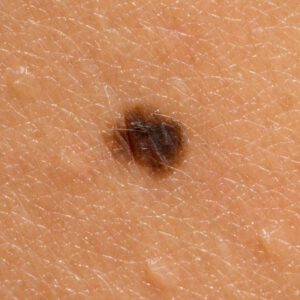Two new studies done by researchers in France and the United States connect the dots between the number of moles women have and their risk for developing breast cancer.
Published last week in PLOS Medicine, the large studies, both found a connection. One study was done by researchers at France’s Université Paris Sud. The other was conducted by scientists at Brigham Women’s Hospital and Harvard Medical School –
The Two Studies
The French study – which used a cohort of about 89,000 women teachers studied over 18 years – found that premenopausal women with “many” moles were 34 percent more likely to develop breast cancer than those with none.
The US study – which includes a cohort of about 74,000 women nurses studied over 20 years – found that women with 15 or more moles were 35 percent more likely to develop breast cancer than those women without moles.
That corresponds to about an 8 percent risk of developing breast cancer for those women without moles and an 11 percent risk for those with 15 or more moles.
23andMe Researchers Take a Look
In another illustration of the power of 23andMe’s database our researchers were able to very quickly look at our own data to see if we could find the same association between the number of moles and risk for breast cancer. We did. As with the two recent studies, our data also showed that the more moles a woman had, the higher their risk for breast cancer.”
So why look at moles when studying breast cancer?
A Possible Connection with Moles
Moles are typically associated with the risk for skin cancer, but researchers decided to look at their possible connection to breast cancer because the production of moles is associated with higher levels of estrogen and progesterone.
Those two hormones may also be associated with the development of breast cancer. Several studies have found a hormonal influence on whether women develop breast cancer. And, as the editors of the study noted, women who don’t have children or have the late in life, are at “a higher breast cancer risk than women who have several children when they are young because pregnancy alters sex hormone levels.”
So researchers thought that the number of moles may help be a predictor for breast cancer risk. The data seem to indicate that is true.
Both studies are illustrative of the power of being able to look at seemingly unrelated traits to learn more about the underlying biology of disease.